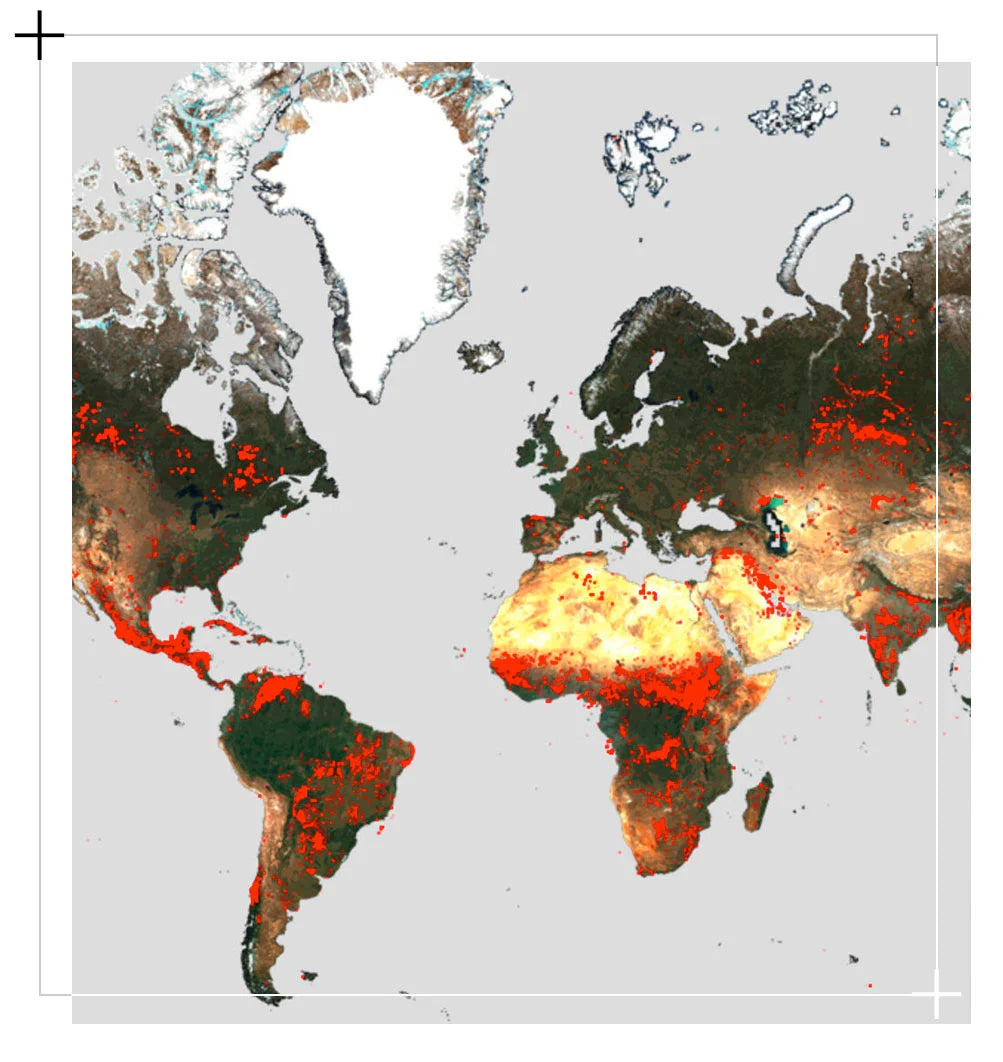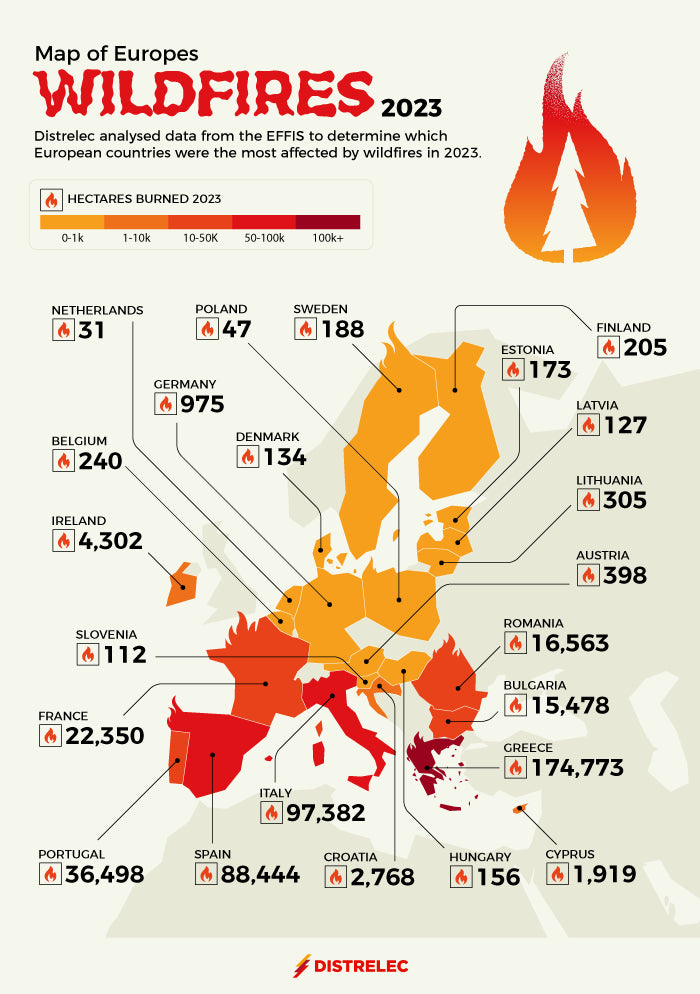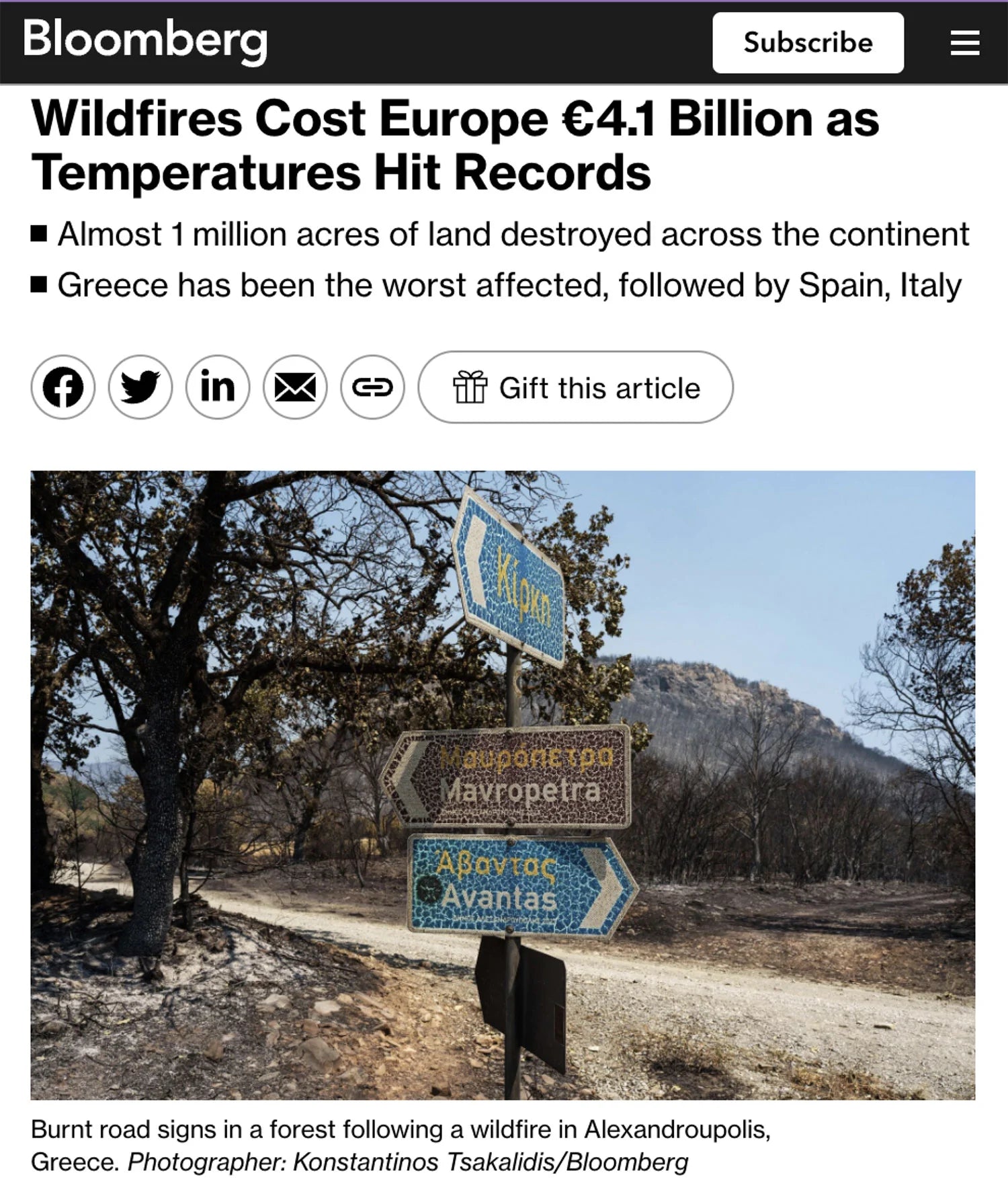
Honchō win at the UK Search Awards
Honchō were victorious at the UK Search Awards, celebrating not just a win but also a second-place finish. We proudly took home Best Use of Search: Retail / eCommerce (PPC)...

This is a great example of how data can be reused and realigned to find new angles in newsworthy content.
We revisited a previous reactive digital PR campaign on the 2022 wildfires a year later and gained press coverage and links in 28 countries.
ARTICLES WITH BRAND MENTIONS
50+ DA LINKS
COVERAGE IN 28 DIFFERENT COUNTRIES

2022 broke records in the number of wildfires ravaging Europe. With temperatures set to continuously rise due to climate change, we wanted to understand how governments could future-proof against loss of wild and human life.
Utilising data from the European Forest Fire Information System (EFFIS), they calculated how much countries would benefit from implementing early-detection Internet of Things (IoT) sensors, alongside the cost of the wildfires in comparison to investing in this technology.
In 2023 our Digital PR team used that data and reworked the campaign with a new angle.
Using EFFIS to locate the European countries experiencing the most severe wildfires in 2022, the team estimated their cost based on the assumption that every hectare of land burned costs around 10,334 euros.
They measured the forest density of these countries using World Bank data, dividing the km squared by 15 (the range of the IoT sensor) to calculate the number of sensors required. Using the average market cost of IoT sensors in bulk, it was possible to calculate the total cost of sensors, and what percentage this number was of the total estimated cost of wildfire damage.
To calculate the CO2 emitted as a result of the wildfires, they took the average of 15 tonnes per 2.5 hectares burned.
The team deduced that countries, such as Portugal, would benefit greatly from sensors. Their 2022 wildfires made headlines as they enveloped Madrid in smoke – 400km away! With 100,098 hectares of land burning, this cost an estimated €1,034,434,753.56, whilst implementing IoT sensors would’ve cost €43,961.28, just 0.00424% of the damage cost.
They outreached angles around percentage costs to highly relevant sites and saw some success, however, it didn’t make the impact we felt it deserved.
Then came 2023…
Southern Europe saw unprecedented heatwaves this year, resulting in the largest wildfires across the continent burning through thousands of hectares of green space, impacting residents, wildlife and holidaymakers. Those in Greece being the biggest the EU had ever recorded.
We were able to rework the previous campaign and contribute to this story in a meaningful manner. Our approach was different, in that we simply looked at the total cost of the 2023 wildfires in the worst-impacted countries, and the total cost of preventative sensors.

Coverage in 151 online articles
Brand mentions featured in media outlets from 28 countries.
12 x 50+ DA authoritative, editorially valid backlinks contributing towards improving Distrelec’s search engine rankings.
Coverage in top-tier publications including Bloomberg, (four separate times), CNN, MSN, Yahoo News, Yahoo Finance, Business Insider, and CNBC.
Our story was also featured in two print articles, one being The Mirror (UK) and the other in Insurance Journal.
Paul Morris - Head of Marketing, Distrelec“We were impressed by the simple, yet highly effective and targeted approach taken by the new Digital PR team at Honcho. The work they carried out was on brand and in our wheelhouse, meaning they were able to put us at the heart of an existing and important news story in a way that felt natural. We were hugely impressed by their ability to generate reams of coverage, links and social mentions so quickly and are very excited about what the future holds.”

Digital PR, SEO
Faith In Nature put their faith in Honcho's Digital PR team
VIEW CASE STUDY
Digital PR, SEO
An on-brand Digital PR campaign to support a new product launch
VIEW CASE STUDY




Honchō were victorious at the UK Search Awards, celebrating not just a win but also a second-place finish. We proudly took home Best Use of Search: Retail / eCommerce (PPC)...

The first ads in Googles new AI Mode have been spotted. But how are they laid out? And what could this mean for Google Ads in the future? (Photo Credit:...

OpenAI has launched Atlas, a browser with ChatGPT built in, and it is something we at Honcho are watching closely. It blends familiar search with an assistant that sits alongside...
| Item | Price | Qty | Total | |
|---|---|---|---|---|
| Subtotal |
£0.00 |
|||
| Shipping | ||||
| Total | ||||